13 Fast Growing Shade Trees Colorado
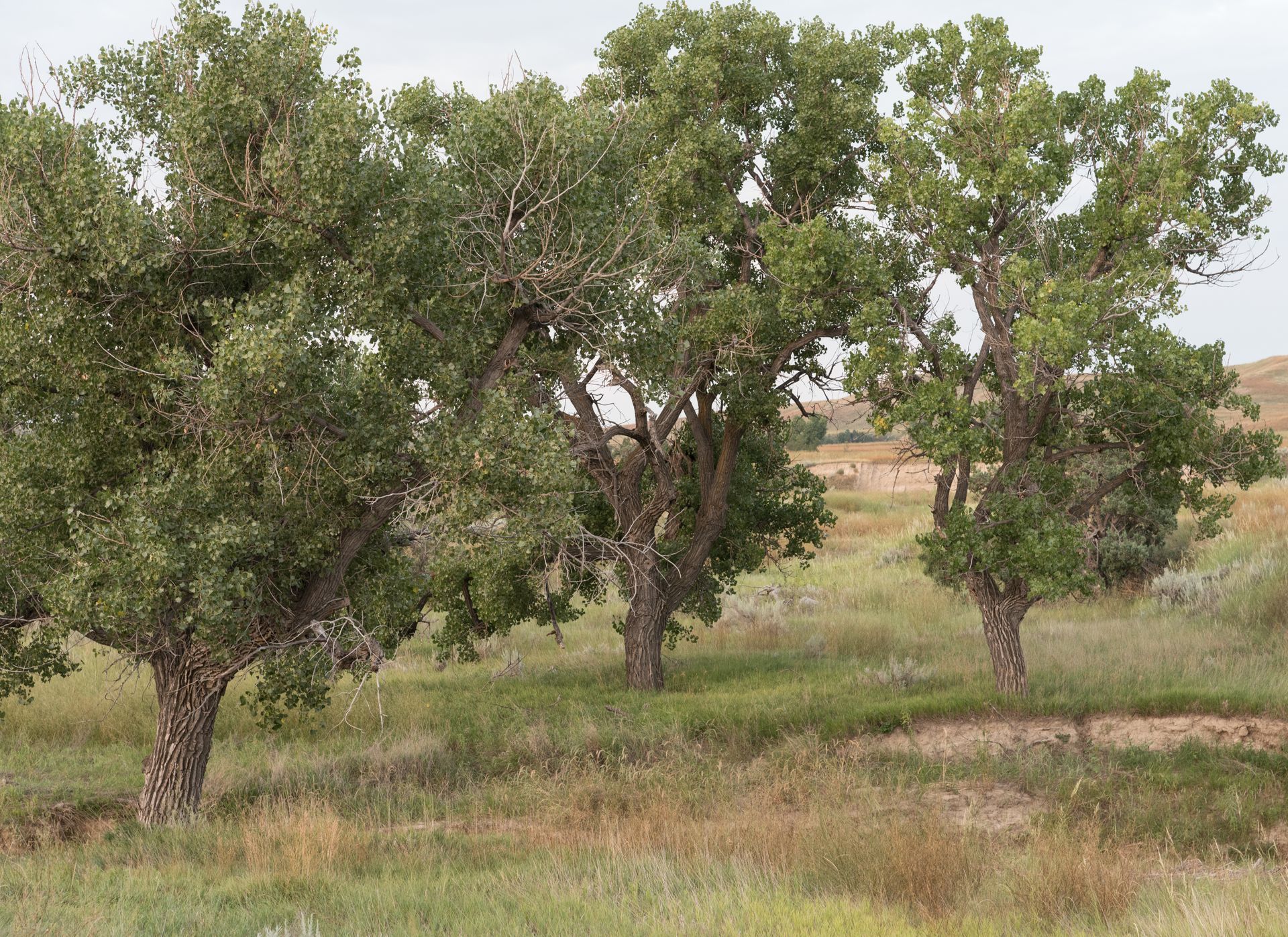
Sagebrush, Hoptree, Western Sand Cherry, and Mountain Mahogany are some of the shrubs native to Colorado. But the region is also home to shade trees that provide great aesthetic value and a much-needed respite from the hot summer months.
Cottonwood is one of the fastest-growing shade trees in Colorado, growing up to several feet per year with a mature height of around 60 feet. Other varieties include maples, oaks, elms, and lindens, with varying growth rates.
Crabapples are a favorite of many Colorado gardeners due to the colorful blooms and tart fruit they produce.
Here's a roundup of the fast-growing trees in Colorado.
Table of Contents
- 13 Fast Growing Shade Trees in Colorado
- Plains Cottonwood (Populus deltoides monolifera)
- Western Catalpa (Catalpa spp.)
- Silver Maple (Acer saccharinum)
- Colorado Blue Spruce (Picea pungens)
- Western Hackberry (Celtis occidentalis)
- American Sycamore (Platanus occidentalis)
- American Hophornbeam (Ostrya virginiana)
- Japanese Pagodatree (Styphnolobium japonicum)
- Southwestern White Pine (Pinus strobiformis)
- Hardy Rubber Tree (Eucommia ulmoides)
- Shade Master Honey Locust (Gleditsia triacanthos var. inermis ‘Shademaster’)
- Redmond Linden Tree (Tilia americana 'Redmond')
- Autumn Blaze Maple (Acer × freemanii)
- Kentucky Coffee Tree
- Sweet New Earth's Favorite Fast Growing Shade Tree In Colorado
- FAQs
13 of the Fastest Growing Shade Trees in Colorado
Colorado falls in the hardiness zone from 4 to 6. That means the trees you plant must be able to tolerate extreme temperatures from -30 degrees Fahrenheit to +100 degrees. Here are some of these trees.
Plains Cottonwood (Populus deltoides monolifera)

The Plains Cottonwood is a large deciduous tree with a wide, rounded crown and drooping branches. Its leaves are deltoid in shape with a pointed tip and an asymmetrical base. The bark is dark gray or black with deep furrows on older trees.
When young, the tree has a pyramidal shape that becomes more rounded with age. Plains Cottonwoods are fast-growing trees that reach their full height in about 20 years.
They provide nesting sites for many birds and other wildlife. The flowers of Plains Cottonwood appear in the spring along with the foliage and are very attractive to pollinators.
Western Catalpa (Catalpa spp.)
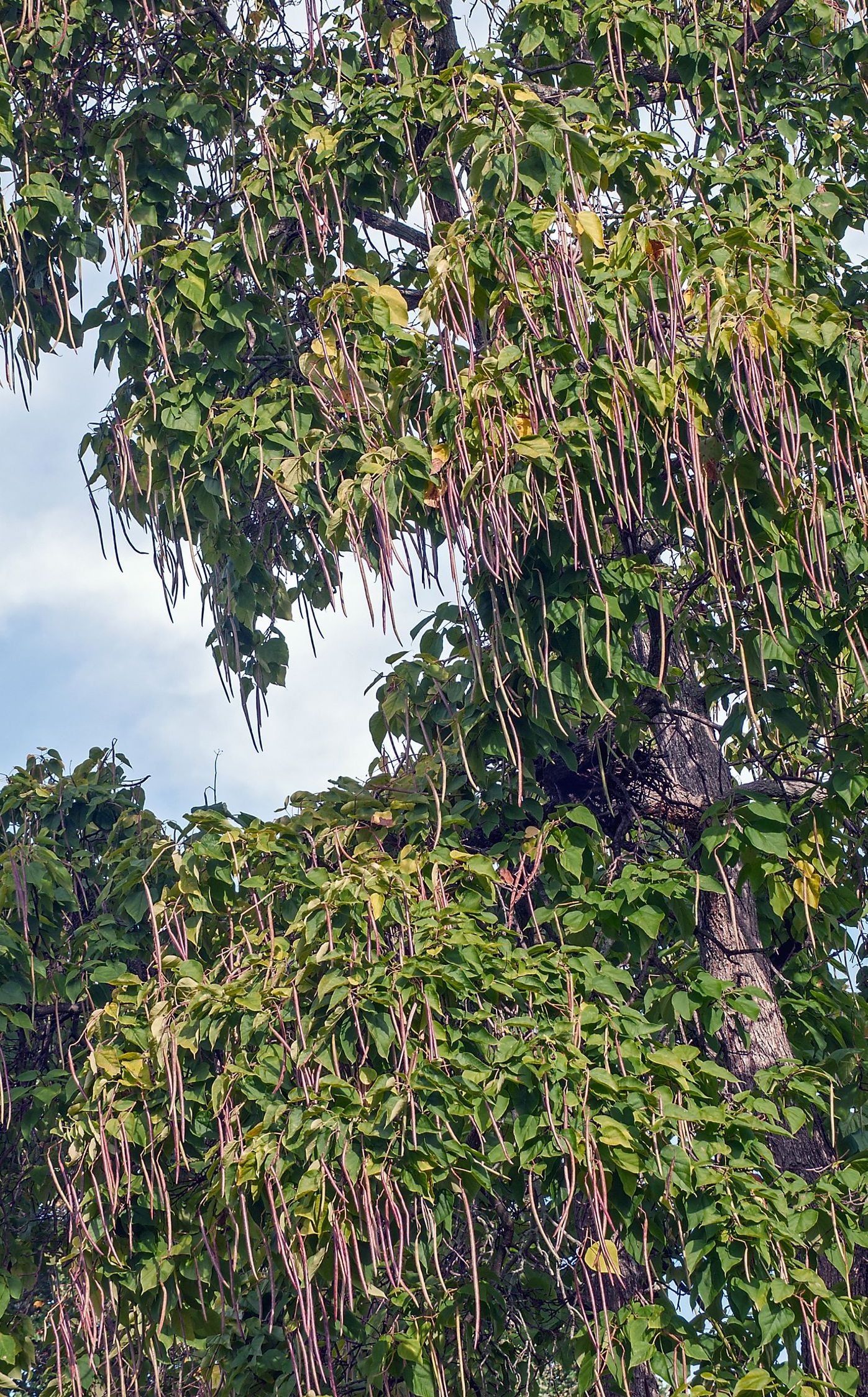
Other Common Names: Bois chavanon, Western catalpa
Growing Zones: 4 - 8 [2]
Average Mature Height: Up to 30 feet
The Western Catalpa has an upright and spreading habit, growing to 30 feet tall with a spread of 25 feet. The leaves are large and heart-shaped, up to 8 inches long.
Fragrant and creamy white flowers appear in mid-summer, followed by long, cigar-shaped seed pods. The bark is rough and mottled, with an attractive pattern on the branches.
The Western Catalpa is a great choice for providing shade in the garden, and its long blooming period attracts bees, butterflies, and other beneficial insects. It is also a popular choice for landscaping as it tolerates a wide range of soil and climate conditions.
Silver Maple (Acer saccharinum)
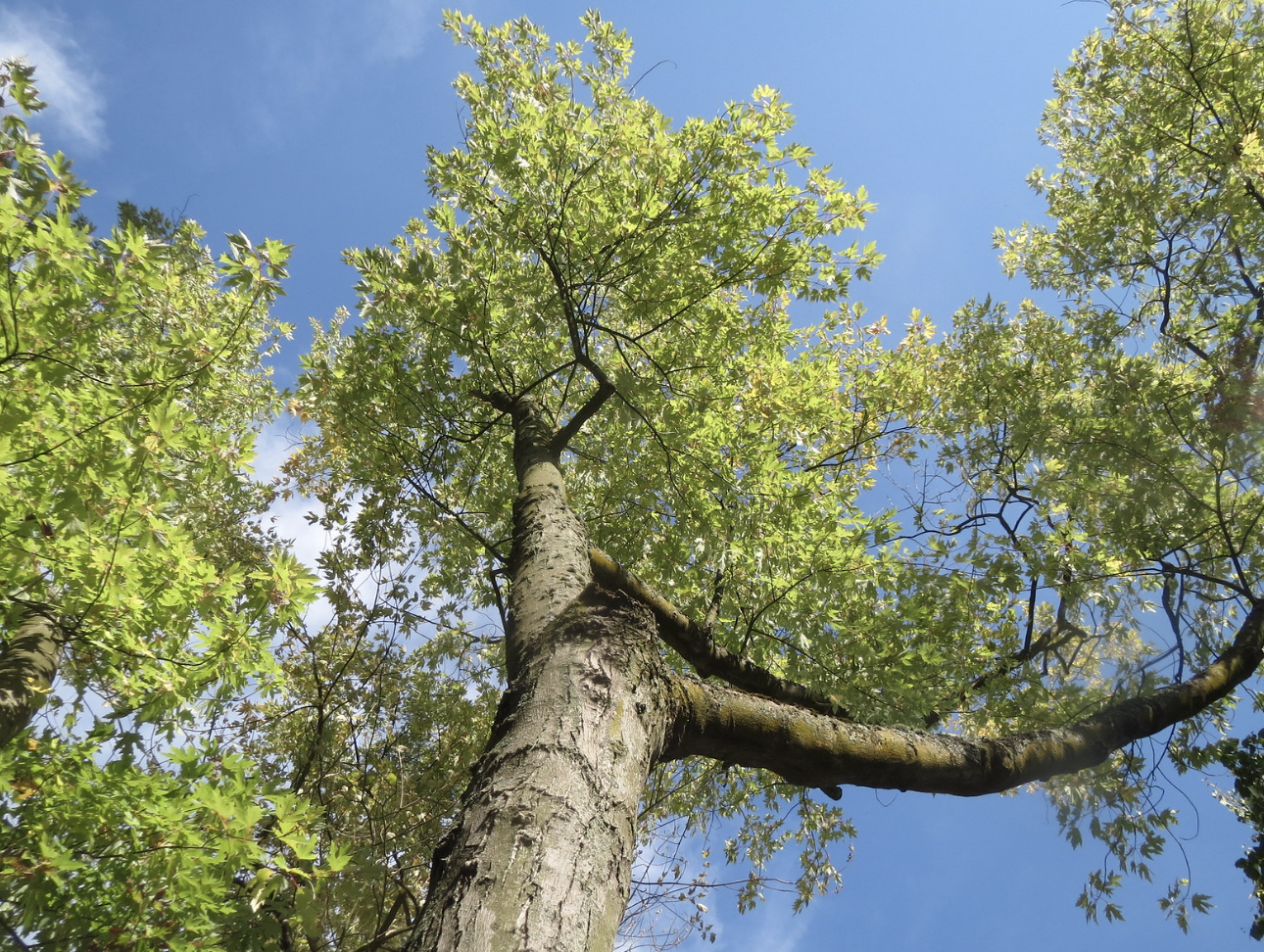
Photo Credit: Rockstein
Other Common Names: River maple, white maple, swamp maple
Growing Zones: 3 -9 [3]
Average Mature Height: 50 to 70 feet tall
This tree is easily recognizable for its silver-gray bark and dark green foliage. The leaves usually have five lobes, although some may have three or even seven.
The undersides of the leaves are a bit lighter than the top, giving them a shimmering effect when the light catches them.
In the spring, it produces small yellow-green flowers in clusters. In the fall, its leaves turn beautiful shades of yellow, orange, and red.
Many gardeners appreciate the River maple tree because it is a fast-growing species, so they can quickly get the shade they need.
It also tolerates urban conditions well. Generally, it's not a good choice for small yards because it grows rapidly.
Colorado Blue Spruce (Picea pungens)
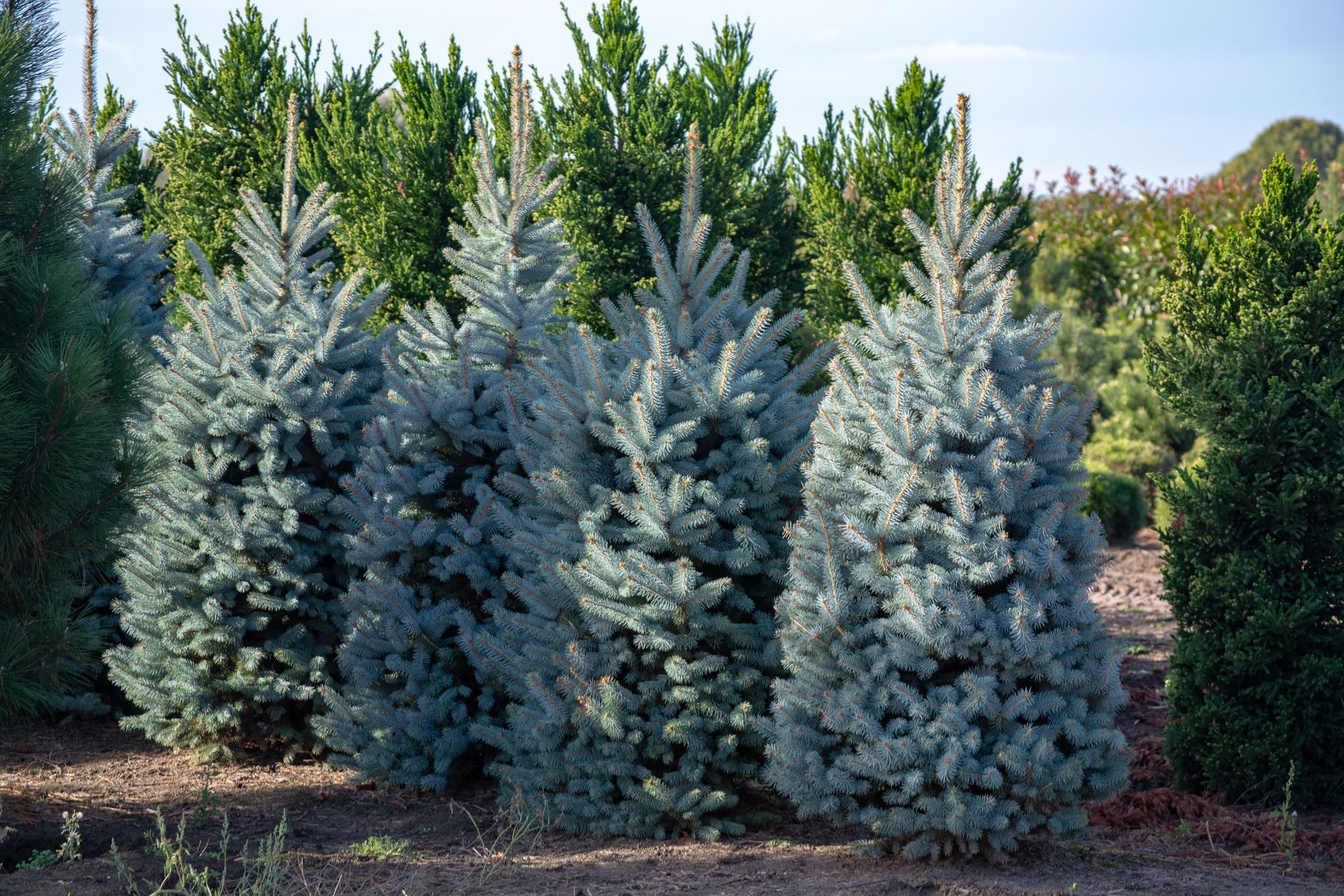
Other Common Names: Pino real, silver spruce
Growing Zones: 3 - 7 [4]
Average Mature Height: 50 to 75 feet tall
The Colorado blue spruce is a popular specimen tree for gardeners in cooler climates, as it can thrive in various growing conditions. Its graceful, upright form and distinctive silver-blue needles make it stand out in the landscape.
The tree has a conical shape and may reach up to 75 feet tall and 25 feet wide in maturity. Its needles are approximately half an inch long, a distinctive silver-blue color that turns slightly blue-green in summer.
The needles are sharp and stiff, arranged spirally around the branches. The Colorado blue spruce is an extremely hardy species and can tolerate temperatures as low as -40 degrees Fahrenheit. It's a very adaptable
evergreen tree.
Did you know? The Colorado Blue Spruce can reach an age of up to 800 years. Although the oldest recorded Colorado Blue Spruce tree died at the age of above 600 years, experts estimate the tree can live for up to eight centuries.
Western Hackberry (Celtis occidentalis)
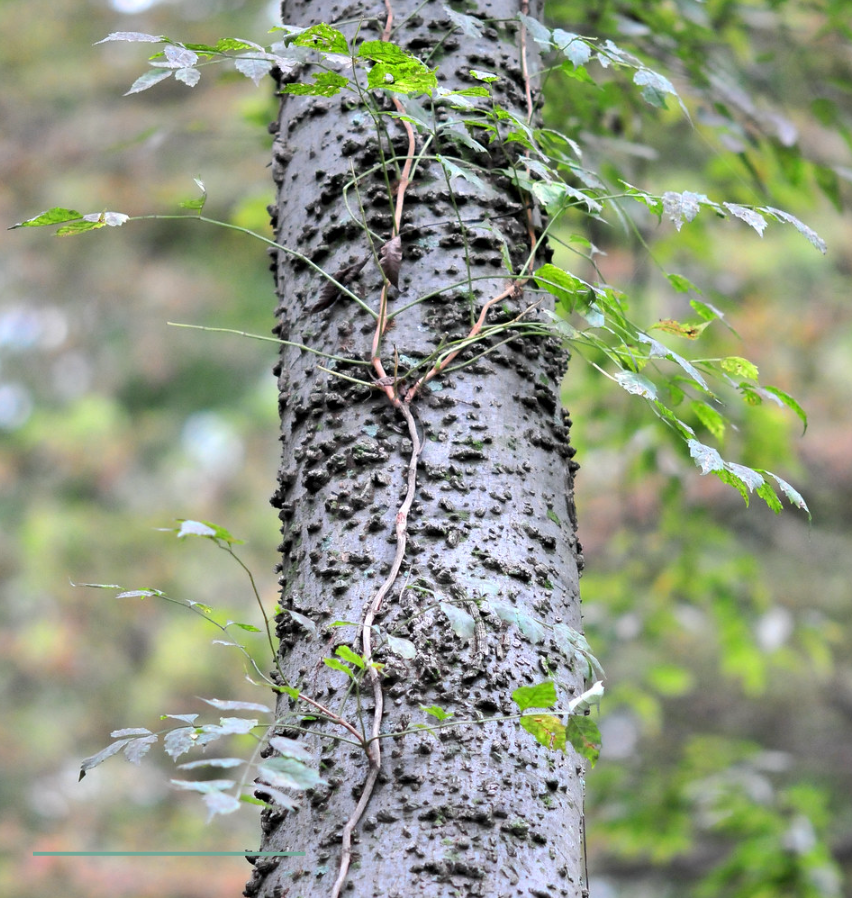
Photo Credit: Richards
Other Common Names: Sugarberry, American hackberry, Nettletree
Growing Zones: 3 -9 [5]
Average Mature Height: 40 to 60 feet
The Western Hackberry is a large deciduous tree. It is native to the United States and Canada. Its leaves are oval or heart-shaped, with toothed margins. The bark is grayish-brown, with corky bumps and ridges.
In the spring, small yellow flowers appear in clusters and give way to edible berries in late summer. The berries are red, turning dark purple when ripe.
The Western Hackberry is drought-tolerant and can thrive in a variety of soil types. It is often used in urban landscapes, as it tolerates air pollution.
American Sycamore (Platanus occidentalis)
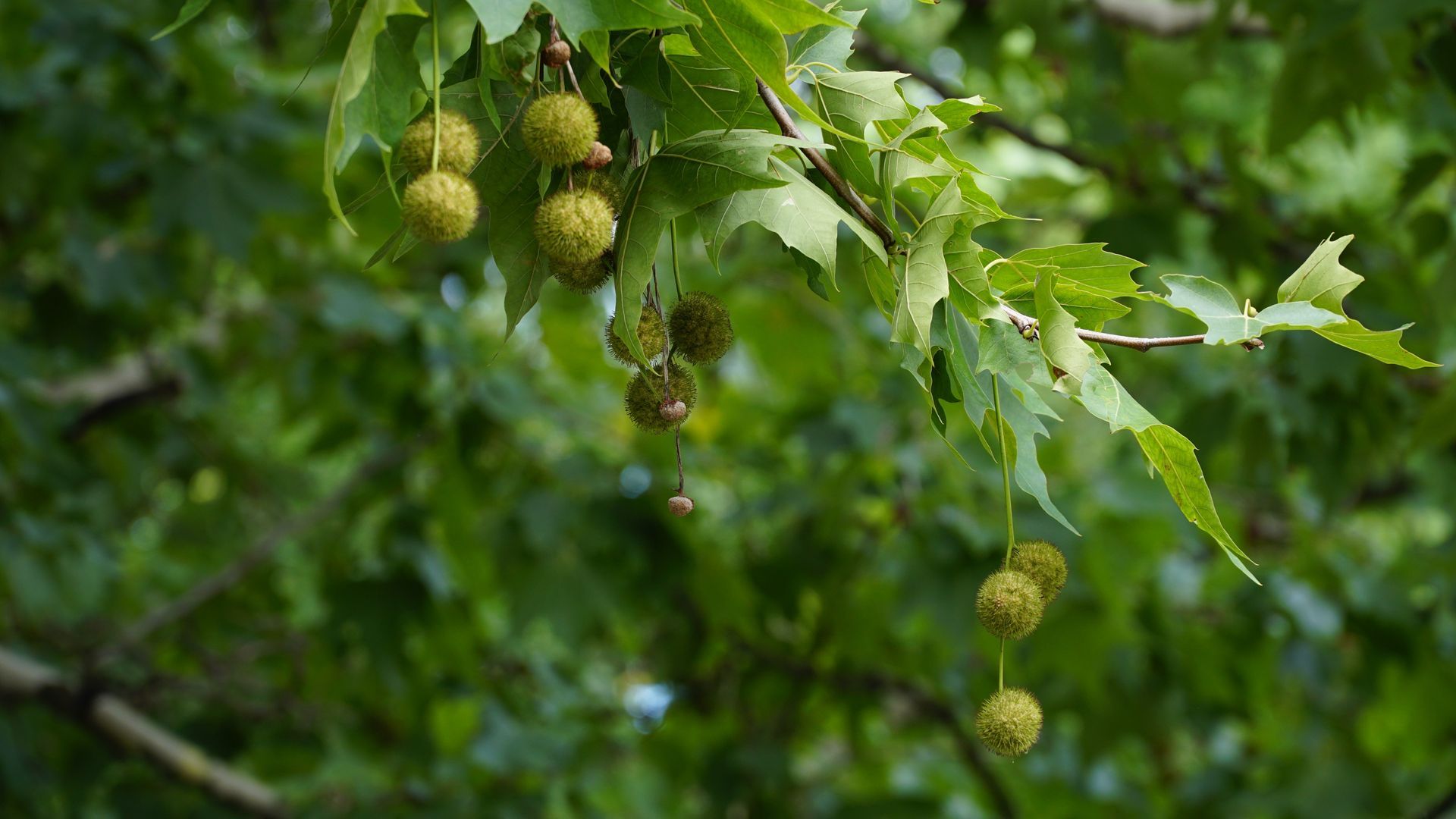
Other Common Names: Eastern sycamore, buttonball tree
Growing Zones: 3 -9 [6]
Average Mature Height: 75 to 100 feet
The American Sycamore is a fast-growing, large deciduous tree that can reach up to 100 feet tall and 75 feet wide. It has a pyramidal shape with an open, rounded crown when mature.
Like other Platanus species, the American Sycamore has an attractive mottled bark. The mature tree's trunk and main branches are grayish-brown with a crisscross pattern of lighter gray patches.
RELATED: Evergreen Trees vs Deciduous Trees
Its large leaves are bright green, hairy on the underside, and have three to five lobes. The tree flowers in the spring and produces round, spiky, greenish-brown fruits.
Did you know? The American sycamore is also called the "ghost tree" because of the exposed white branches in the tree's crown when leaves fall off them.
American Hophornbeam (Ostrya virginiana)
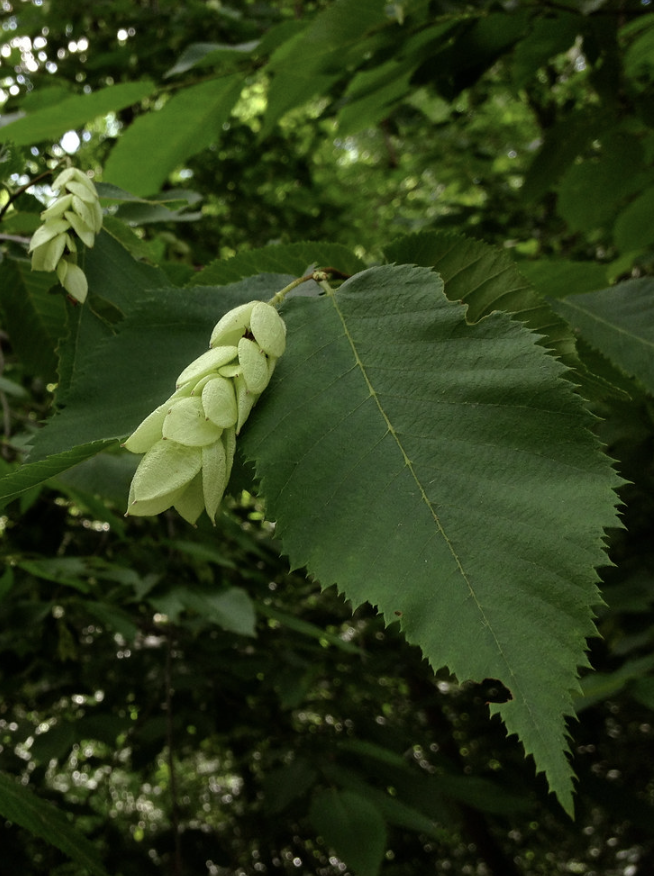
Photo Credit: F. Reynolds
Other Common Names: Eastern Hop Hornbeam, Hop Hornbeam
Growing Zones: 3 -9 [7]
Average Mature Height: 25 to 40 feet
The American Hophornbeam tree is a slow-growing, deciduous tree used in landscaping. It has a distinctive look, with dark green leaves that are ovate to lanceolate and wavy-edged. It produces small, yellow-green catkins in the spring.
The American Hophornbeam tree is a great choice for areas needing erosion control, as its shallow roots help stabilize the soil.
It can be used in residential and commercial landscaping, providing a nice backdrop for other trees and shrubs. The species is also a great choice for wildlife, providing food and shelter for birds and other animals.
Japanese Pagoda Tree (Styphnolobium japonicum)
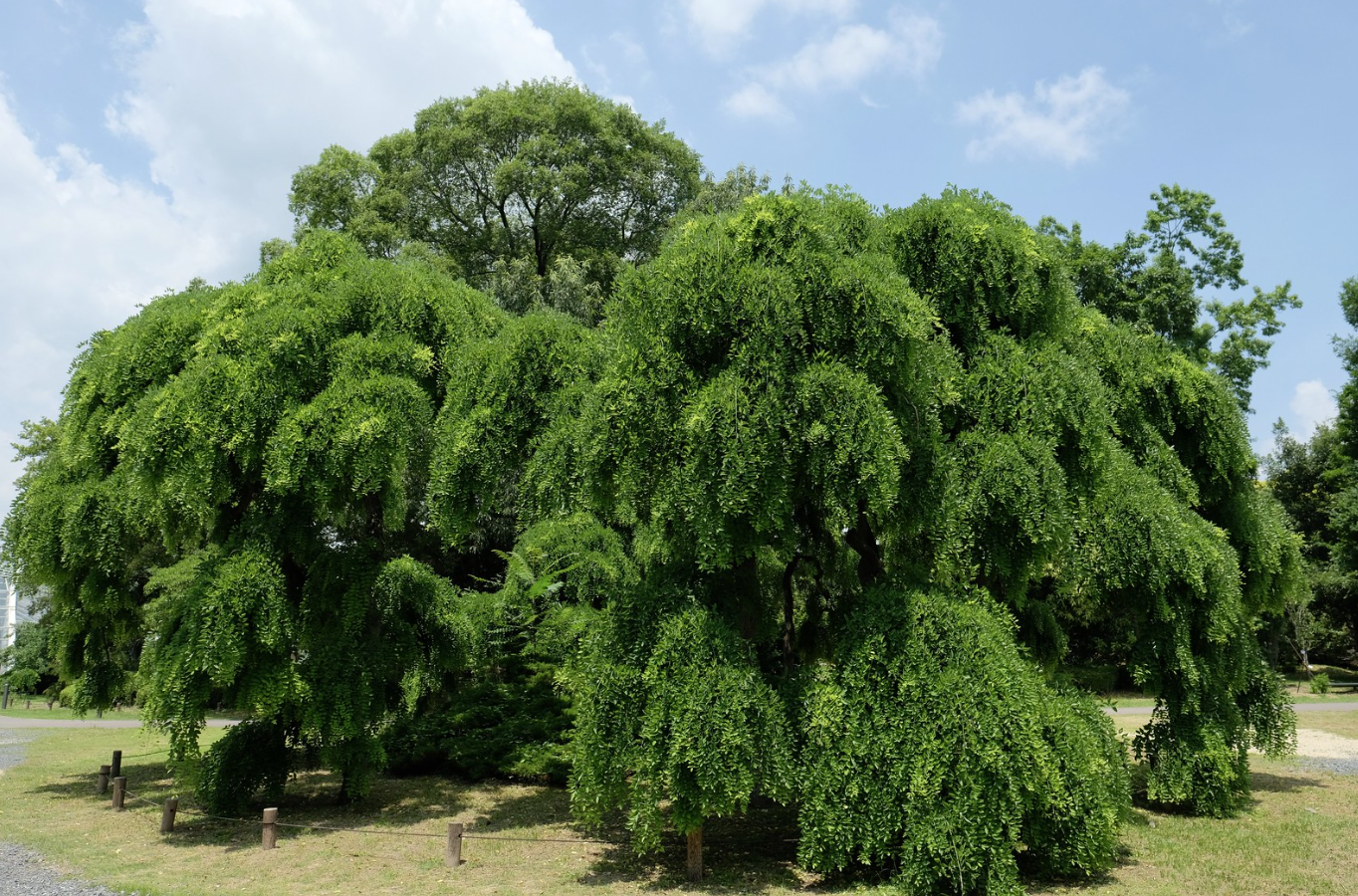
Photo Credit: Abhastophotographer
The Japanese Pagodatree is a hardy flowering tree native to China and Korea. It is popular for its handsome foliage and fragrant flowers. The tree has a wide, rounded crown and grows up to 25-35 feet tall.
Its leaves are pinnate, with 6–9 pairs of leaflets. The foliage is a glossy, dark green. It produces fragrant white flowers in late spring and early summer with yellow stamens and red anthers.
The flowers are followed by flat, winged seedpods that turn brown in the fall. Japanese Pagodatrees have a long lifespan and can live up to 100 years.
Did you know? The Japanese Pagodatree is the official tree of Beijing and is a part of many Chinese legends. Thus, it has historical and cultural significance in China.
Southwestern White Pine (Pinus strobiformis)
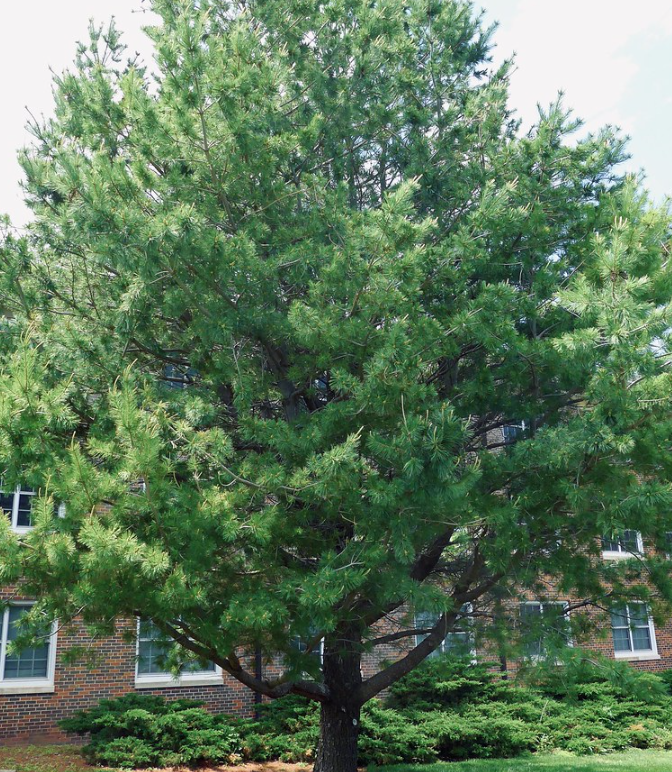
Photo Credit: Ali Eminov
Other Common Names: Mexican white pine, Chihuahua white pine
Growing Zones: 5 -9 [9]
Average Mature Height: Up to 90 feet
The Southwestern White Pine is a tall evergreen conifer found in the mountains of Arizona, New Mexico, and Mexico. It has a straight trunk with reddish-brown bark that develops plates and fissures as it ages.
It takes its common name from its white wood, prized for furniture, and its long needles, which are in clusters of five. The pine cones are 2-3 inches long, with yellowish scales with a red-brown tint.
The Southwestern White Pine grows well in full sun but can tolerate partial shade and dry climates. It prefers well-draining, slightly acidic soil.
Hardy Rubber Tree (Eucommia ulmoides)
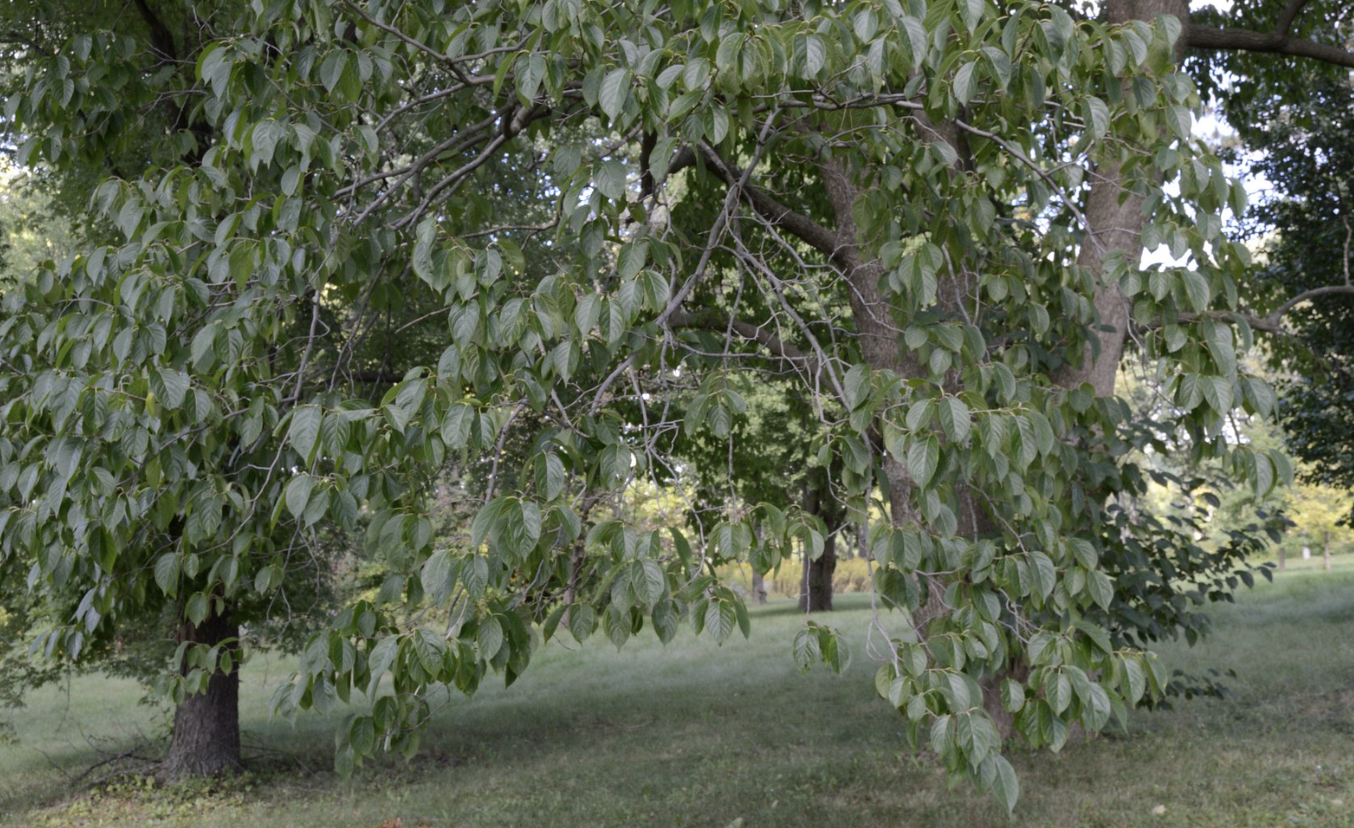
Photo Credit: Blick
The Hardy Rubber tree is native to China and a member of the Eucommia genus. It's a deciduous tree that grows at a moderate pace and prefers full sun or light shade.
Its bark is gray-brown in color, and the leaves are oval with a dark green, glossy top and bright yellowish-green underneath.
The leaves turn to a golden yellow in the fall. That yellow fall color makes the Rubber tree a site to see in Colorado.
The tree produces separate male and female flowers, the male in small yellowish catkins and the female in round clusters. Small, brown nuts form after pollination.
Shade Master Honey Locust (Gleditsia triacanthos var. inermis ‘Shademaster’)
Other Common Names: Thornless honeylocust
Growing Zones: 3 -9 [11]
Average Mature Height: 40 to 45 feet
The 'Shade Master' Honey Locust is a deciduous tree with a broad, rounded crown and showy fall color.
It gets its name from its ability to cast a deep shade and is an excellent choice for lining a driveway, providing privacy, or creating a shady spot for outdoor activities.
The 'Shade Master' has a more full, uniform shape with drooping branches than other honey locust varieties and is especially resistant to breakage.
Its lacy dark green foliage turns a golden yellow in the fall and is covered with fragrant, pea-like pods. The deep root system makes it extremely drought-tolerant and able to resist strong winds.
Redmond Linden Tree (Tilia americana 'Redmond')
The Redmond Linden tree is a fast-growing tree that can reach heights of up to 60 feet. Its deep, glossy green foliage is distinctive and will make a beautiful statement in any landscape.
The linden tree is widely admired for its wide, spreading canopy, which provides ample shade and protection from the sun in any garden. Redmonds are especially hardy and can tolerate a wide range of soil types.
In June, the tree produces clusters of fragrant, yellowish-white blooms that attract butterflies and bees. The flowers are followed by small green fruits with a papery husk.
Autumn Blaze Maple (Acer × freemanii)
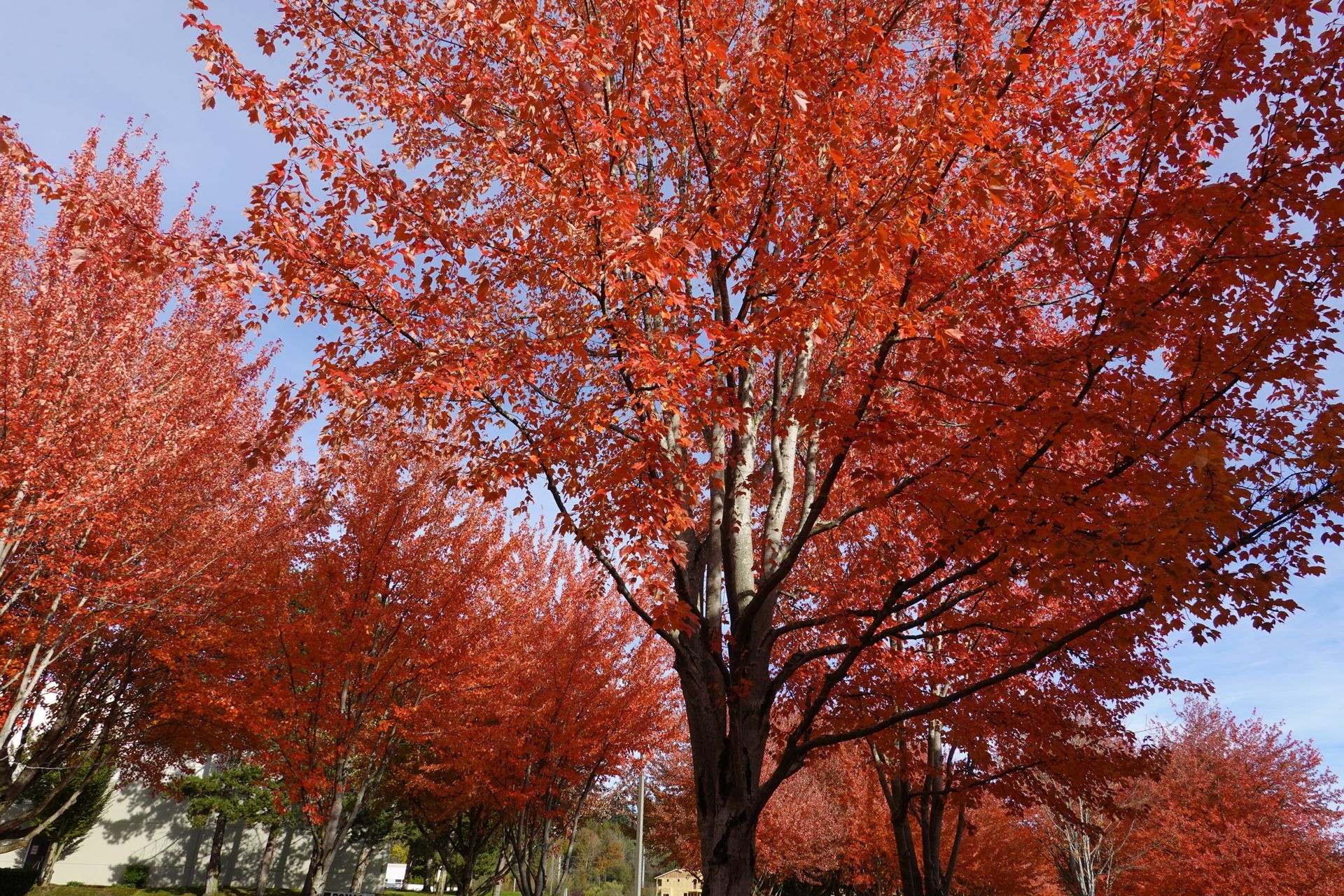
The Autumn Blaze Maple is a hybrid maple that combines the Red Maple Tree and Silver Maple tree. It is an incredibly beautiful and fast-growing tree, making it popular amongst gardeners and landscapers.
Its leaves are a stunning combination of orange, yellow, and red in the fall months. Like other maple trees, the Autumn Blaze Maple has a strong, rounded canopy and airy branches.
It is relatively drought tolerant once established and can be planted in full sun or partial shade. It is best to water the tree regularly during its first year or two after planting, as it needs plenty of moisture.
Kentucky Coffee Tree (Gymnocladus dioicus)
Other Common Names: American Coffee Bean Tree
Growing Zones: 3 -8
Average Mature Height: 60 to 100 feet
The Kentucky Coffeetree is, ironically, another fast-growing shade tree that thrives in Colorado Springs.
This iconic shade tree, also known as the American Coffee Bean tree, has beautiful foliage. They can reach up to 100 feet tall and 60 feet wide.
Unfortunately for most wildlife, the Kentucky Coffeetree has some poisonous bits. Their leaves and raw seeds are no good for the little critters!
Final Say on the Beautiful Shade Trees of Colorado
Colorado’s abundance of mature and well-tended shade trees, from maple trees to evergreen trees, enhances its natural beauty. These trees provide protection from the elements and, in some cases, add to a home’s curb appeal.
Some of the most popular shade trees in Colorado include maple, oak, and pine. Most of these tree species require very little maintenance save for an annual trim and some occasional pruning.
They also provide excellent habitats for wildlife, including birds, squirrels, and other small creatures.
When selecting a shade tree, it pays to do a bit of research on the tree and its requirements. Colorado is home to various climates and soils, so it is important to select a species that can thrive in the region.
Before you go...
Now that you know about shade trees in Colorado maybe you want to go a little bit further. Be sure to read our article on the best front yard trees so that you can keep your neighbor's prying eyes out of your business...

Christina Hernandez
Christina has done most of her research on environmental science but recently has changed her focus towards sustainable forestry. She has a passion for the outdoors and wants to spread that passion to the world.
Join our community!
Join to receive guides, insights, and the latest gardening deals!
